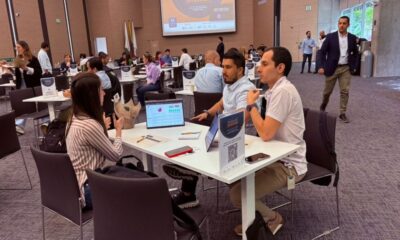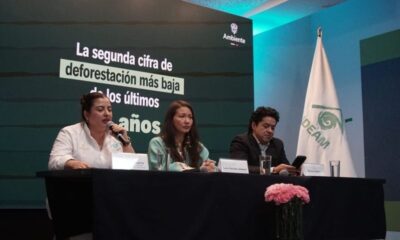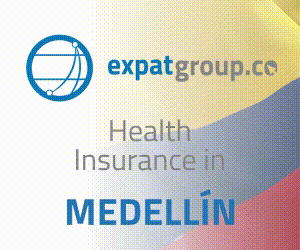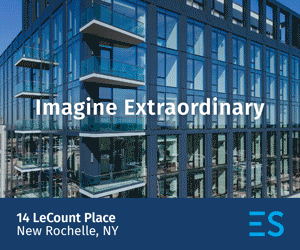Social Inclusion: The Secret Sauce To Medellin’s Incredible Renaissance
Medellín has come a long way from its notorious and rapidly receeding past decades. What is the secret to their success in turning around their urban society, shedding old manacles and gaining a reputation as one of the world’s most innovative cities? Finance Colombia recently spoke with José Ignacio Loaiza, the city of Medellín’s international cooperation advisor working in the relatively new Bureau of Social and Family Inclusion in order to gain an understanding of the social policies that are being deployed on a municipal level, what effect they are having, and what other cities and governments might learn from their efforts.
Above photo: José Ignacio Loaiza
Finance Colombia: This morning we visited Comunas (neighborhood districts) 1 and 2, Santo Domingo. In two decades, that area has gone from maybe the most dangerous neighborhood on earth, to now, a thriving neighborhood and even an international tourist destination. Reaching this point as you have in Barrio Santo Domingo, what are the challenges and the strategies to continue to transform the rest of the city, for example in San Javier, Comuna 13, how the city is implementing programs to pull in these people into participation in the development we have seen?
José Loaiza: The Bureau of Social Inclusion is a new department. But at the same time it came from a past the city had. What you call inclusion was a process under the name of Bienestar Social (Social Welfare). When the current mayor (Anibal Gaviria Correa) came in, he designed a development plan to modernize the city, and the administrative structure to achieve it. He made some strong changes. I believe in Colombia he is the most modern mayor when it comes to administration.
For us, this has been very useful. When speaking about the existing social welfare model, it made reference to giving to the poor something the needed for survival, but only that. What was the change the mayor brought about? Not only had the name changed, but a complete restructuring towards social inclusion and our biggest problems after violence is the disintegration of the family nucleus. So the name of our office is: Secretaría de Inclusión Social y Familia, which tries to encompass all the elements and all population groups.
We have a model orchard in the periphery and in the poorest districts for people to be able to produce their food. We direct them, give them the seeds, and tell them: “You do it like this.” Do you need to know how it’s done? If you cannot attend the closest school, we have a bus.”
But because our city, and all cities have such big dynamics, there were two groups who couldn’t be included in the bureau. Our youngsters, because our city is a young one, so it has its Secretaría de Juventud, with strategies in some ways parallel to some units that we have, and the Secretaría de Mujeres, as it is well-known that equality for women is problematic in Latin America.
Now, what is the Secretaría de Inclusión Social y Familia? It is in charge of managing all social inclusion programs directed towards population groups that are disabled or that cannot be said to be sufficiently included in the processes of the city. We deal with seven units. We have the Unidad de Discapacidad (Disability Unit): this one takes on the issues of the disabled from two perspectives. There are the natural barriers, which you can see around you. Beyond that we have people. So inclusion programs were created for families to be assisted through the government. That program, “Ser Capaz en Familia” (To be able to, in family) takes all the institutional development to the families.
In this case we formed an interdisciplinary group for homes. A social worker goes, a psychological counselor, a therapist, we coach the family, to explain to them how to deal with the disabled family member, to help them understand that it is not a problem, or a punishment of that sort, just a situation while living. And we teach them how that person must be treated. With that problem we have been able to minimize the impact, inside the family tragedy for a person becoming disabled, until that person knows what to do. Additionally, the program is attached to the “Ser Capaz” model, for employability.
Today in Medellín, you don’t see those children in the street. Walk downtown. You used to see them in the street, now we don’t.
But we realized that now these families have no income, they have no way to sustain themselves. So mothers and fathers are not disabled, but they have no jobs or have abandoned them to attend their children. So a program is created for them. Last Thursday we were at an exposition here, to create employability and small businesses. We are trying.
So this person who has injured himself is now doing something he really wants to do, starting to receive income and to reintegrate economically into society. These are assisted micro-companies, assisted by operators, we teach them to make shirts, foods, things they can do at home and that are marketable. But there we would need help, and that’s what we are trying to do; how to accomplish a higher sustainability level.
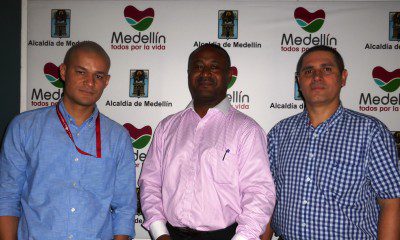
Left to Right: ACI’s Carlos Jaramillo (now with Ruta-N), Finance Colombia’s Loren Moss, and José Ignacio Loaiza of the Secretaria de Inclusión Social y Familia
At the start of this administration, training was given for something that wasn’t useful, or the real capability was not identified, nor the academic ability of the person. We transformed the whole model and turned it into “100% employability.” A profile is made for these people, to know what kind of training they already have. Some of them have high school, others are technicians, and if they haven’t finished we help them to finish, and everybody is taken to Servicio Nacional de Aprendizaje (National Learning Service), SENA, and with them we have an agreement. We do direct employability work with them. On Friday I had the pleasure of learning that a company that produces cleaning equipment, brushes, soaps, all that; they have employed 15 disabled workers.
We invite companies, we give them business tours, we take them to companies where the disabled work, because the businessman doesn’t necessarily start with the mindset on how to make real inclusion work. Taking the person and showing him that it works. On Friday we saw a boy who couldn’t hear, but who had a lip-reading skill that—just imagine, reached the level of normal communication. He started as a basic laborer, and now is in sales management. Youngsters in packaging and quality control; ladies with strong cognitive problems doing the warehousing work, this is a continuous process.
We have the Unidad de Seguridad Alimentaria (Food Security Unit), which would be the second unit. There are organizations who work on the challenges of food security in the countryside, but Medellín went for urban food security, the opposite of what was being done worldwide. So what do we have? We became known for the “Glass of Milk” model. To take a glass of milk with an energetic snack to a kid. That is the minimum of what we do nowadays. We implement a vertical integration model towards schools of the whole city, rural and urban alike. We have culinary training restaurants backed by the bureau. Additionally, we created a training school for the people of the poorer neighborhoods. What do we do? We go to schools, we have a school bus, train the teacher, train the principal, we invite the families, and we teach them how to make their lives much better with the foods they have. They are the same staples, but if you know how to cook them differently and take advantage of what you have, you can make a nutritional combination that will allow you to strengthen.
Finance Colombia: That is important. I have seen it. That problem exists in here, the Caribbean, the US. Somehow, perversely it’s a good problem compared to abject starvation, but sometimes people who suffer from obesity are the poorest. And that due to not knowing how to eat well and cheaply.
José Loaiza: With the studies the unit made for the bureau, we discovered that many people had money for buying a soda. Let’s do an analogy. This beverage can cost me $1.50 USD. But with a dollar here you could buy two fruits, a panela (natural beverage), a whole watermelon and still have money left. From that menu you could take the fruit and make a salad, a juice, make a combination with another food; you could buy vegetables and with a carrot make a salad, a juice, a soup.
We’ve been working dilligently on that and it became a strong work strategy; trying to eliminate malnutrition as much as possible. But we don’t deny it, we have a program of markets directed by population niches. Coordinating with other units, we know where extreme poverty lies, in families with elderly people. We do a nutritional profile for the elderly. If a kid is there along with the elder, we do the same with the kid, and probably with other members as well, looking forward to decreasing all nutritional problems.
Last year in the city, the number may not be exact; we had one dead child due to malnutrition. We investigated, and it was a child who emigrated to the city but was not reported. So it’s quite different when the state simply intervenes compared to when it does it proactively, which is what we’re doing. We have a plan inside the unit called “Madres Gestantes” (Expectant Mothers), working in conjunction with the Secretaría de Salud (health department). We take the mother with the child inside her, they do the medical care and we do the nutritional part. We have infant formula with the brand of the city, with the required nutrients. When the child is born we put him in a program as well, and it includes a period of of nutritional support. This care is accompanied by another program, “Buen Comienzo” (Good Start), and some other programs we have.
We have a model orchard in the periphery and in the poorest districts for people to be able to produce their food. We direct them, give them the seeds, and tell them: “You do it like this.” Do you need to know how it’s done? If you cannot attend the closest school, we have a bus.”
Finance Colombia: That’s what I saw near the northern transportation terminal, some people with community gardens in their neighborhoods.
José Loaiza: Yes, that is urban. For example, many of these people say, “I don’t want to go off to school.” So we have in Robledo, in front of Colegio Mayor, some classrooms. We create some groups, we send some buses, we bring them to the class, and take them back. All those elements have reduced the security impact in the city.
Our indigenous population in Medellín, surprises you. When you speak with them, they come from Amazonas, from Orinoco, from Pastó, from places one cannot imagine.
We still have, it’s true, a huge transient population. Medellín receives unemployed people from the eight surrounding cities. Those populations are jobless and without food. So we touch those issues to the extent that we are able to. That’s the Unidad de Seguridad Alimentaria, that’s the combination: education and healthcare. To coordinate with schools, there is the Secretaría de Educación; for the benefit programs there is Buen Comienzo, for early childhood; Unidad Niñez, for the protection of children, Adulto Mayor, for our elderly. If we don’t operate a function directly, the operator is hired or a director is supplied who is in charge of controlling the functions we need.
Finance Colombia: During progress it is natural for people from the countryside to say “let’s go to the city, there are more opportunities there.” It is normal that this happens; when the city grows, more people start to come: “Look, it’s prettier, let’s go there.” Even without a plan or knowing what to do, but the infrastructure is there for the people to fall in the little holes. They don’t always find the opportunity they’re looking for.
José Loaiza: And the problem lies much deeper. Due to the fact that our city is one of neighborhoods, a valley of districts, a valley of cities that look like neighborhoods, let’s say it like that, and the peripheral cities, for some time now, have developed processes so that people want to be here. And our centralized model is such that everything is in Medellín. That is one of the biggest challenges as well.
We have the Unidad de Etnias (Ethnicities Unit). Our mayor went to the afro-community, Afro-American, and indigenous. They used to exist as a cultural concept only. What did he say, then? “No, let’s include them in a model, so that they really belong to the city.” So they preserve everything they have gained from the cultural part, but now they are under the development of a public policy that allows inclusive models of work, education, free will, to be part of the community, and to feel belonging. But at the same time for them to start identifying as an afro community inside a culture, which is also valid. And it is perhaps something difficult to handle, because Medellín, statistically is below 2.6 million, unofficially, 3.2 million, and the ethnic community surpasses 230,000 people. So in percentages we are speaking about a huge population. And a lot of it is resident in the periphery, in sub-humane conditions that do not meet standards. Many of them come from Chocó. There are communities from a place quite behind in terms of infrastructure, education, academic development.
What else did the mayor do? He installed four floors of fully new and equipped headquarters, with cultural and administrative spaces: spaces to transform the headquarters into an example of ethnic inclusion, something that no other city in Colombia has. That’s the great difference. I don’t remember the cost, but the dimensions speak for themselves. Located in Prado, a historic district of the city, close to metro stations, complete with all the equipment. And at the same time, for the indigenous communities, allowing the creation of three councils. There was one at the beginning, and it has increased to three. Our indigenous population in Medellín, surprises you. When you speak with them, they come from Amazonas, from Orinoco, from Pastó, from places one cannot imagine, what do they do in Medellín? One expects the people from (the neighboring, largely afro-Colombian province of) Chocó to arrive, or just from our own Urabá (in the north of Antioquia Department, of which Medellín is the capital), but no, they come from the most unimaginable places. One solution to be able to assign budget and to find development strategies within these communities, is to group them with councils, and each council has got its allocation. This year their allocation budget was increased. The number I don’t have it, but they were allowed to present projects they thought to be worthy. It’s a different form of inclusion. We are looking for other elements.
We have the Unidad de Niñez (Childhood Unit). A two-mandate unit. One is the protection of our children and adolescents. And the other one is promotion and prevention. For protection, the first thing we did was to adjust the law. We saw what was out there elsewhere in the country, and put it to work here. Hogares de Paso (Temporary Shelter) was required for children up to five years old; that means you stay only for a few days.
In cases of abuse, we look to protect the child first. The real way to guarantee that is when Bienestar Familiar intervenes, which is the guarantor of children’s rights in Colombia, by law and policy. When we encounter cases where intervention is necessary, we take the child, and we report him to Bienestar Familiar for them to take the case into their hands, to take the corresponding measures. Supposedly eight days, and from there Bienestar Familiar makes a decision. The city of Medellín provides Hogares de Paso. If they have to stay three months, they stay three months. The most important thing is to guarantee the wellbeing of our children. Additionally, we created the Hogares de Paso 2, because there are children older than 6-7 years. In those homes we have two modalities: an internal and a semi-external. In the internal, the child stays until there is a guarantee from Bienestar Familiar, and the other one is to have assistance accompanied by the family. Both cases work pretty well, but the problems are many. Inside the unit itself we have a program for children with drug addiction problems, and who were in the streets; our under-age homeless. What did we do? We created for them a program unique in the country, unique in Latin America, and unique in the world. A year ago Brazil implemented the same program. But we were the first ones to bet on it, and we did it to save our children’s lives. These children were in the street.
The most important thing is to guarantee the wellbeing of our children.
We started doing some work. The mayor’s administration offers them a boarding school program, in different houses. They used to get there and get bored, so they left. Here we started convincing them, and in the first, second, third year, the goal was the same: a 2% desertion rate. We created a program with the annexed mental hospital, where we can care for our children in each of their phases.
We work to recover contact with the family…in many cases they would rather not see the family. The city of Medellín guarantees to these children education, nutrition, wellbeing, and social reintegration. We had to build an annexed house where the child finishes the first phase (detox and so on), and we have schools and educators inside the process so he doesn’t lose contact with these services. How? He still lives with us but has an individual room. He has everything a child or an adolescent has. He can go to an external school, and comes to live as if it was his home. Until, “Ok, I don’t’ want to be here anymore”, we move him to a house, to continue with a normal life while we train him, which is the following stage. Colombian law allows us to have him like that until they are 25 years old. But if the person has a disability for any reason, due to drug addiction for example, we have additional support. The process is so beautiful…
Finance Colombia: I have never seen anything like this before.
José Loaiza: Today in Medellín, you don’t see those children in the street. Walk downtown. You used to see them in the street, now we don’t. It had to be done this way, valid assistance for recovery and restructuring. Inside the same unit, we have a program called ESTA where we defend against commercial sexual exploitation of children and adolescents. We have invested more money in this than you can imagine. We have looked for all possible strategies. We are working closely with the Spanish city of Barcelona, with them providing us with technical and economic support. The economic support is not that meaningful if we don’t consider the value of the program. But, what has it accomplished? It has been able to organize Medellín’s downtown, and formalize services and tracking of the inquilinato, and last year the reach into these was 100%. Do you know what an inquilinato is? It’s a building that in the past used to be apartments, houses, offices or whatever. Someone has divided it into small rooms, for families to live; seven, ten people to a room.
Finance Colombia: But informal. In English we called them “tenements.”
José Loaiza: An informal hotel. And you pay per day: “You can pay, come inside. You don’t, away with you!” When we started with the process, one of the things we found out in Medellín’s downtown was its greatest weakness: the ease to exercise prostitution and exploit and abuse our children. We intervened in each and every inquilinato, all of them. In Comuna 10, Medellín’s, downtown, we went one by one. We have written agreements with the administrators: if they see something improper, they must tell us. To families, we explained the assistance that was available to them: to mothers, sisters, the boys. We surveyed children without education in order to enroll them in schools.
We surveyed the schools in the sector, and we intervened with them with the same model. Teacher-to-teacher, explaining to them the problem of sexual exploitation. Because when a child is sexually exploited, and is studying, it is really easy to identify some clues. For instance, the change of clothes, hairspray, an attitude change, not being punctual, missing classes; some aspects which in our culture should be abnormal, but no, people don’t pay attention to it. So teachers were trained. And we now have now those two points of attack. The third one, we built the first “Casa Vida” (Life House) for sexually exploited children. If I took you today you would be surprised: Counselors, sociologists, teachers, the director of the house, all of them specialists in the topic. The idea? To open spaces for playing, studying, communication, without it being mandatory for the child. It’s like telling him or her, “look, there is a new, safe space for you.” We’ve had an impressive acceptance. Some children have even taken their mothers there. We give them lunch, we help them with their homework, that was done with help from Barcelona, Spain.
The goal was intervening and reaching 90 children in 30 months, but that was surpassed by far. Interesting stuff is happening here. Even Barcelona is surprised with the results. In the last stage, there is an exchange, where we are sending staff to Barcelona. Barcelona has requested not to send any high level executives or administrators, but that we should send on-site workers who can most benefit from the experience.
Finance Colombia: Which initiatives have you got for the next two to three years? What is under development for, let’s say, 2016?
José Loaiza: There is one thing I consider innovative. One of the best strategies created in the last three administrations: when you have public policy you have to create a long term development plan that is not dependent upon a particular administration. Then programs are created around the policy. That way you can innovate backed by stability. You have the guarantee that programs will not be dismantled because in order to dismantle the policy, you have to undo the whole journey backwards: to socialize the reversal, explain to the public why it is being dismantled, and even then you’d have to replace it with something else. You would have to go to the city council, and the community, and to start the whole process.
Finance Colombia: You avoid political intrigue.
José Loaiza: Exactly! It has guaranteed stability in the city. In almost all the programs we have: Educational policy, operational policy. Bur the Unidad de Niñez is more than just policy. It’s also prevention and promotion. We have Pedagogía Vivencial (Pedagogy of Life Experience) providing intervention in neighborhoods, with what the youngsters themselves want. We go to them and ask: “do you want to dance?” Then we teach them dancing. “You would like to learn an art form? Come here, we teach you art.”
This week I was shown the new program of intervention for people who have already studied but don’t know what to do next. “You finished high school?” So we intervene seeking employment opportunity. We work all those elements, and additionally, childhood cannot be addressed separate from family, so it has direct involvement with family elements of the children involved.
What did we do? We created for them a program unique in the country, unique in Latin America, and unique in the world. A year ago Brazil implemented the same program. But we were the first ones to bet on it, and we did it to save our children’s lives.
These children were in the street.
We have the Unidad de Proyectos Especiales (special projects unit). At the beginning I was told it was the unit that didn’t fit anywhere, but it is actually the unity that fits everywhere because it is relevant to everything we do. In this unit we specifically work with LGBT: Lesbians, gays, transsexuals and bisexuals.
The mayor, with his wisdom, said: “Every person must have his or her own space.” The first thing he did was to create a house: they have their own headquarters. A coordinator was appointed, linked to the town hall in order to have a budget, a management contract and guarantees from the administration. For example, during these past three years, we have held some ceremonies that for many people go unnoticed, but for an LGBT person is very important: it’s their identity. If I don’t want to be called Carlos or Marta, I have that right. We’ve done ceremonies where the notary comes and solemnizes the name change. It may sound really weird to some, but for God’s sake, it’s your identity, the way you feel good about yourself, and people have started to open spaces.
Our challenge for LGBT is in the comunas (peripheral, poor neighborhoods), and the problem is that invisible frontiers still exist. Many of those neighborhoods don’t have the ideal atmosphere. We also have problems regarding inclusion in the workplace in the same way as in the afro-Colombian community. Often an LGBT person, once they achieve a certain level of success, attains a certain self confidence; same as afro-Colombianos. When they reach the summit, some of them have the self-image of: “I’m not afro anymore.” So they spoil our statistics of those who have progressed because we miss a lot of our own success stories.
We are working hard, we have a guaranteed budget, and we’ve managed contracts with the European Union that will allow us to reach this community. We have another program to assist and reintegrate prostitutes in Medellín: A family integration program that will allow social and work reintegration. It’s quite difficult. The reason is that sometimes these women taste too much money: never enough for anything substantial, but still a lot of it, relatively speaking. So reintegration into the legal economy limits their income because they don’t have schooling, their income decreases, and the social stigma is very strong, so we’ve had tough work.
This administration started working with a count of 4,500 street inhabitants. Now we are down to about 2,600-3,200, through a combination of impressive strategies, such as: a Centro Día (Day Center) that allows us to see between 800 and 1,200 people per day. We have social workers that go by bus to those places at dawn, in the afternoon, at night.
The city of Medellín guarantees to these children education, nutrition, wellbeing, and social reintegration.
“Are you ill? Let’s get you to a doctor. “You take your pills at this hour? We come and get you to make sure you do.” We feed them breakfast or lunch, give them a place for showering, for washing their clothes, a basketball court, someone to talk to. The conditions: no drugs, no weapons—with consequences. Some of them are punished and are desperate to come back. Another strategy: Centro 24 (Downtown 24). We have dormitories. 400 people in dormitories. We have people with treatable illnesses, and we diagnose them and include them in the health system with the Secretaría de Salud (health administration) or we take them to a special shelter for those illnesses we have to keep quarantined. But we also do the “demolition work” as I call it, so that these people are reintegrated into society, and from there they to stage three.
My explanation of this stage is different from the technical definition. In that stage, the person is asked, “Ok, you want to enter society? Fine, we will take you to a different shelter, to Centro 24”, which is like a hotel. “From there we take you to a study center in Prado or in Barrio Caribe.” Where appropriate, the detox process begins for drugs. That’s always the first one. And from there, an assessment starts. Why do I say that the world doesn’t understand the seriousness of this problem for us? We are making a child an adult. It’s like taking a child, and we are going to teach him. In many cases they have actually lost their reading literacy, their ability to know what a life goal is, “I’m on the street, I extend my hand and there’s the drug. I have drugs, I don’t need to make any effort, I’m in the street, it’s nice weather here, I’m relaxed, I do whatever I want.” And in this cycle we turn people into active participants in society, which is very hard.
But we do it with technical training programs for employment with SENA and other organizations. Basic life skills are taught. Carpentry, painting, there are some fantastic artists. Their art exhibitions are amazing. Recreational space, reading therapies…
Finance Colombia: I didn’t know these programs existed here! And it was interesting, during the weekend, I was wondering what things they do for homeless people here. I supposed there were programs to help them, but that’s why I ask. Just as a fellow human being I was pondering, walking the streets here in Medellín during Sunday, and thinking, “how do they do those things here?”











